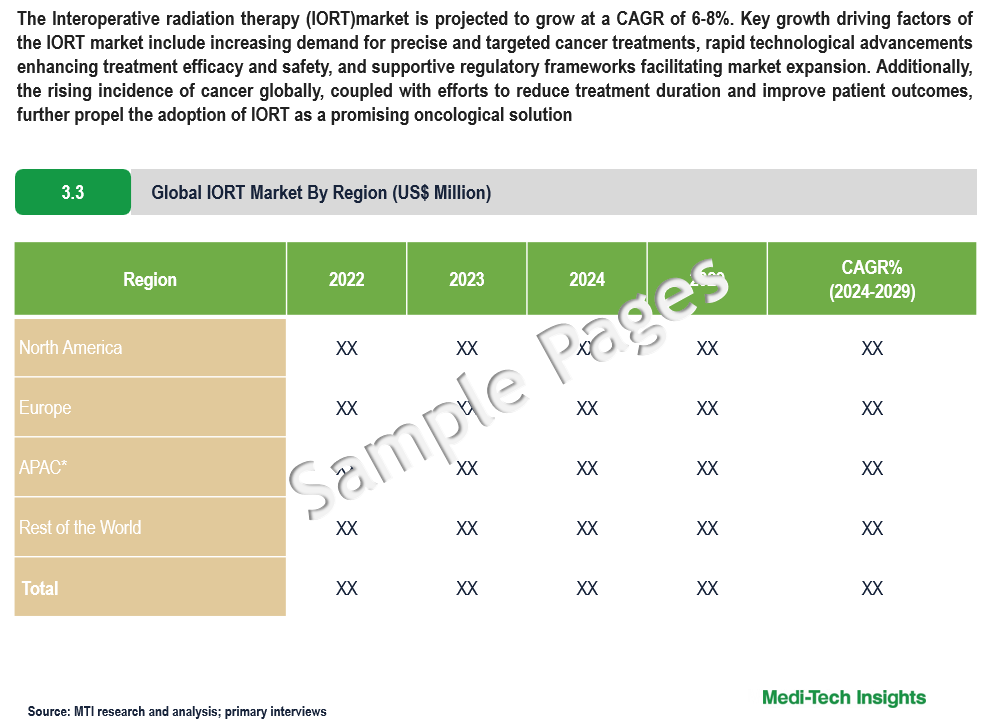
Intraoperative Radiation Therapy Market Size, Growth, Share, Industry Revenue Analysis and Forecast to 2029
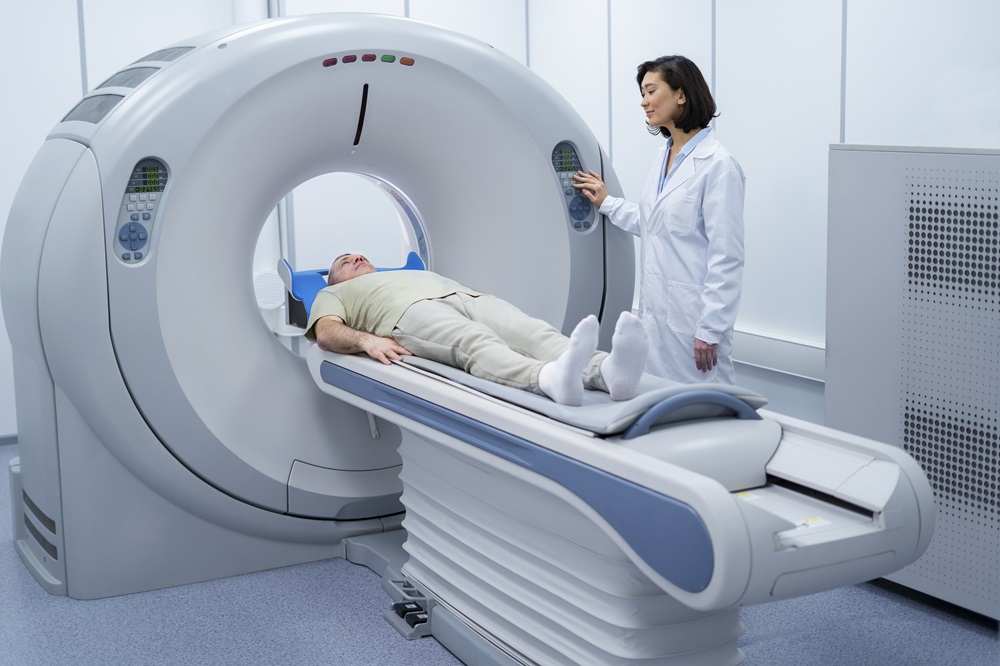
The intraoperative radiation therapy (IORT) market is projected to grow at a CAGR of 6-8%. Key growth driving factors of the IORT market include increasing demand for precise and targeted cancer treatments, rapid technological advancements enhancing treatment efficacy and safety, and supportive regulatory frameworks facilitating market expansion. Additionally, the rising incidence of cancer globally, coupled with efforts to reduce treatment duration and improve patient outcomes, further propel the adoption of IORT as a promising oncological solution. To learn more about the research report, download a sample report.
Intraoperative radiation therapy (IORT) is a technique used in cancer treatment, particularly in the context of surgery. It involves delivering a single, high dose of radiation therapy to a tumor site during surgery, immediately after the tumour has been removed. This is typically achieved using a specialized radiation delivery system. The advantage of IORT is that it allows for precise targeting of the radiation to the tumour bed while sparing surrounding healthy tissues. By delivering radiation directly to the tumour site at the time of surgery, it may help reduce the risk of cancer recurrence and minimize damage to nearby organs or tissues. IORT is used in various types of cancer treatment, including breast cancer, colorectal cancer, pancreatic cancer, and others. It's often considered for cases where the tumour is located close to critical structures or organs, making it challenging to deliver radiation safely using conventional external beam radiation therapy.
Efficiency and Efficacy: Fueling Growth in Intraoperative Radiation Therapy
Intraoperative radiation therapy (IORT) stands as a pioneering technique revolutionizing cancer treatment. This specialized approach administers a concentrated radiation dose directly to tumour sites during surgery, ensuring pinpoint accuracy while sparing healthy tissues from radiation exposure. The market for IORT is poised for significant growth due to several compelling factors. IORT's ability to precisely target cancer cells during surgery is a game-changer. By minimizing collateral damage to surrounding healthy tissues, it addresses a critical need for safer, more effective cancer treatments. Unlike conventional radiation therapies requiring multiple sessions over weeks, IORT delivers the entire radiation dose in a single surgical session. This dramatic reduction in treatment time not only enhances patient convenience but also streamlines healthcare resource utilization. Preservation of healthy tissues is paramount in cancer treatment, particularly when tumours are in proximity to vital organs. IORT's precise targeting minimizes the risk of damage to critical structures, improving patient outcomes and quality of life. Emerging evidence suggests that delivering radiation directly to the tumor bed during surgery may bolster treatment effectiveness, notably in preventing local recurrence. This potential enhancement in therapeutic outcomes positions IORT as a compelling option for clinicians and patients alike.
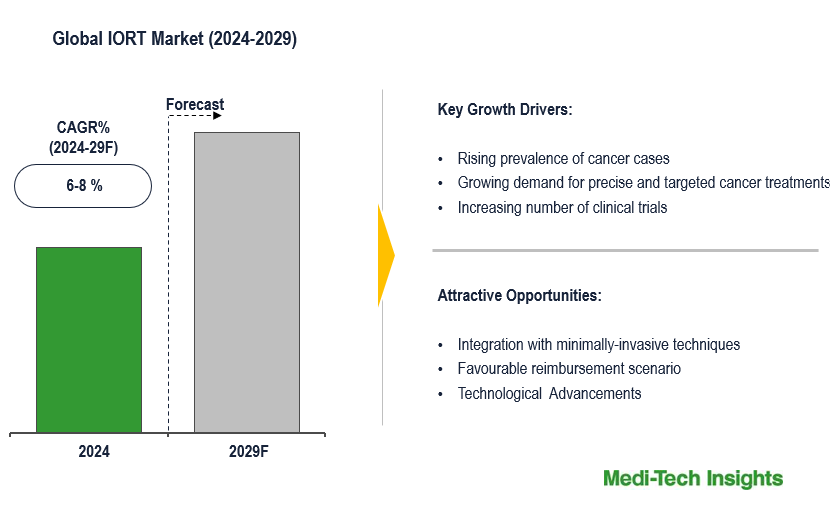
To learn more about this report, download the PDF brochure
IORT: Transformative Trends and Growth Prospects in Cancer Therapy
Intraoperative radiation therapy (IORT) is not just a novel technique; it's a burgeoning trend reshaping cancer treatment paradigms. As this innovative approach gains momentum, it brings forth a host of compelling opportunities that stand to revolutionize the oncology landscape. It integrates seamlessly with minimally invasive surgical techniques, enhancing patient recovery and quality of life. Technological advancements in radiation delivery systems and imaging technologies further propel the evolution of IORT, expanding its applicability across diverse cancer types. The growing acceptance of IORT as a standard of care in select cancer types presents significant market opportunities. As awareness increases and more healthcare facilities adopt IORT technology, the market is poised for robust growth. For instance,
- In January 2023, IntraOp Medical Corporation disclosed that physicians at Vanderbilt University Medical Center (VUMC) utilized the IntraOp Mobetron Intra-Operative Radiation Therapy to treat a pancreatic cancer patient, marking the first successful application of this treatment approach
While the upfront investment in IORT technology may be substantial, its long-term cost-effectiveness is a driving factor. By streamlining treatment processes, reducing hospitalization times, and potentially lowering the risk of complications, IORT offers significant cost savings for healthcare systems and payers. Clinical data supporting the efficacy of IORT in preventing local recurrence and improving survival outcomes present compelling opportunities for clinicians and healthcare providers. As evidence continues to accumulate, IORT's role in achieving superior clinical outcomes will drive its adoption and integration into standard cancer treatment protocol. For instance,
- In August 2021, iCAD revealed promising findings from a two-center study showing that patients treated with the Xoft® Axxent® Electronic Brachytherapy (eBx®) System® for recurrent glioblastoma (GBM) lived without recurrence for 4 to 54 months post-treatment, contrasting with the control group who experienced recurrence within 2 to 10 months and survived for 2 to 22.5 months after treatment, as presented at the American Association of Neurological Surgeons (AANS) 2021 annual scientific meeting
- In August 2020, the publication of long-term results from the international TARGIT-A breast cancer study, utilizing ZEISS technology, affirmed the non-inferiority of targeted intra-operative radiotherapy (TARGIT) administered with ZEISS INTRABEAM immediately following tumour removal compared to external beam radiotherapy (EBRT), with similar risks of local tumour recurrence in the breast and reduced non-breast cancer mortality
Key Constraints
The Intraoperative Radiation Therapy (IORT) market faces several challenges that impact its widespread adoption and integration into standard cancer treatment protocols. Firstly, the high initial investment required for IORT technology acquisition and setup presents a barrier for many healthcare facilities, particularly in resource-constrained settings. Additionally, limited reimbursement coverage and inconsistent reimbursement policies in some regions hinder the financial viability of IORT procedures, limiting patient access. Technological complexities and the need for specialized training further contribute to the challenge of implementing IORT in clinical practice, requiring healthcare professionals to undergo comprehensive training programs to ensure safe and effective treatment delivery. Addressing these challenges will be crucial for unlocking the full potential of IORT in revolutionizing cancer therapy and improving patient care globally.
Global Insights: Regional Dynamics and Market Trends in IORT
North America boasts a significant share of the global IORT market, driven by advanced healthcare infrastructure, high adoption rates of innovative medical technologies, and favorable reimbursement policies. The region leads in technological advancements in IORT systems, with continuous research and development initiatives aimed at enhancing treatment precision and patient outcomes. Europe exhibits a growing adoption of IORT technologies, with established healthcare systems providing widespread access to advanced cancer treatments, including IORT. Europe is a hub for clinical research in oncology, with numerous academic institutions and research centers conducting studies to evaluate the efficacy and cost-effectiveness of IORT in various cancer types. The presence of the European Medicines Agency (EMA) facilitates regulatory harmonization across EU member states, streamlining the approval process for IORT technologies and promoting market growth. The Asia-Pacific region represents the fastest-growing market for IORT, fueled by the increasing prevalence of cancer, rising healthcare expenditure, and growing awareness of advanced treatment options. Countries like China, India, and Japan are at the forefront of market expansion, with investments in healthcare infrastructure and a burgeoning medical tourism sector driving demand for innovative cancer therapies like IORT.
Competitive Landscape
Prominent players in the intraoperative radiation therapy market include ZEISS Group, iCAD, Inc., Eckert & Ziegler SE, Elekta Instrument AB, GMV INNOVATING SOLUTIONS PRIVATE LIMITED, Sensus Healthcare, Inc., IntraOp Medical Corporation Medical, Inc., Isoray, Inc., Becton, Dickinson and Company, Sordina IORT Technologies, Varian Medical Systems, Inc., and Theragenics Corporation

Get a sample report for competitive landscape analysis
Organic and Inorganic Growth Strategies Adopted by Players to Establish Their Foothold in the Market
Players operating in this market are adopting both organic and inorganic growth strategies such as collaborations, and acquisitions to garner market share. For instance,
- In April 2020, Elekta introduced Geneva, the inaugural universal gynaecological applicator for brachytherapy, developed through Elekta's "outside-in" methodology, tailored to meet frontline cancer therapy requirements, featuring a simple assembly with just four clicks, rendering it the preferred choice for gynaecological brachytherapy across all cancer centers, enhancing accuracy for the predominant treatment in 75% of cervical cancer instances.
- In April 2019, Sensus Healthcare, Inc. revealed the signing of a research and development partnership with the Perelman School of Medicine at the University of Pennsylvania's radiation oncology department, aiming to collaborate on clinical research and development for Sensus' Sculptura™ robotic intraoperative radiation therapy (IORT) system
The IORT Market is expected to gain momentum in the coming years due to its potential benefits like precision targeting, time efficiency, therapeutic efficacy, technological advancements, strategic collaborations and aggressive organic and inorganic growth strategies followed by the players.
Key Strategic Questions Addressed
-
What is the market size & forecast for the Global IORT Market?
-
What are the historical, present, and forecasted market shares and growth rates of various segments and sub-segments of the Global IORT Market?
-
How has COVID-19 impacted the Global IORT Market?
-
What are the major growth drivers, restraints/challenges impacting the market?
-
What are the opportunities prevailing in the market?
-
What is the investment landscape?
-
Which region has the highest share in the global market? Which region is expected to witness the highest growth rate in the next 5 years?
-
Who are the major players operating in the market? What is the competitive positioning of key players?
-
Who are the new players entering the market?
-
What are the key strategies adopted by players?
- Research Methodology
- Secondary Research
- Primary Research
- Market Estimation
- Market Forecasting
- Executive Summary
- Market Overview
- Market Dynamics
- Drivers
- Restraints
- Opportunities
- Market Dynamics
- Global IORT Market - Size & Forecast (2021-2028), By Product
- Products
- Systems / Accelerators
- Applicators & Afterloaders
- Services
- Others
- Global IORT Market - Size & Forecast (2021-2028), By Technology
- Electron IORT
- Intraoperative Brachytherapy
- Global IORT Market - Size & Forecast (2021-2028), By Application
- Breast Cancer
- Brain Tumor
- Skin Cancer
- Lung Cancer
- Others
- Global IORT Market - Size & Forecast (2021-2028), By End User
- Hospitals
- Speciality Clinics
- Ambulatory Surgical Centers
- Other End Users
- Global IORT Market - Size & Forecast (2021-2028), By Region
- North America (U.S. & Canada)
- Europe (UK, Germany, France, Italy, Spain, Rest of Europe)
- Asia Pacific (China, India, Japan, Rest of Asia Pacific)
- Rest of the World (Latin America, Middle East & Africa)
- Competitive Landscape
- Key Players and their Competitive Positioning
- Competitive Positioning of Key Players (2022)
- Offerings Assessment, By Players
- Key Strategies Assessment, By Player (2021-2023)
- New Product Launches
- Partnerships, Agreements, & Collaborations
- Mergers & Acquisitions
- Other Developments
- Key Players and their Competitive Positioning
- Key Companies Scanned (Indicative List)
- ZEISS Group
- iCAD, Inc.
- Eckert & Ziegler SE
- Elekta Instrument AB
- GMV INNOVATING SOLUTIONS PRIVATE LIMITED
- Sensus Healthcare, Inc.
- IntraOp Medical Corporation Medical, Inc.
- Isoray, Inc.
- Becton, Dickinson and Company
- Sordina IORT Technologies
- Varian Medical Systems, Inc.
- Theragenics Corporation
- Other Players
The study has been compiled based on extensive primary and secondary research.
Secondary Research (Indicative List)
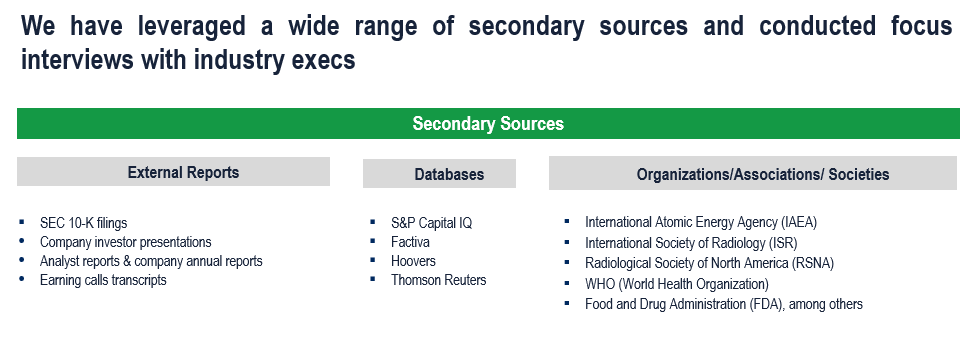
Primary Research
To validate research findings (market size & forecasts, market segmentation, market dynamics, competitive landscape, key industry trends, etc.), extensive primary interviews were conducted with both supply and demand-side stakeholders.
Supply Side Stakeholders:
- Senior Management Level: CEOs, Presidents, Vice-Presidents, Directors, Chief Technology Officers, Chief Commercial Officers
- Mid-Management Level: Product Managers, Sales Managers, Brand Managers, Business Development Managers, Consultants
Demand Side Stakeholders:
- Stakeholders in Hospitals, Speciality Clinics, and Ambulatory Surgical Centers among others
Breakdown of Primary Interviews
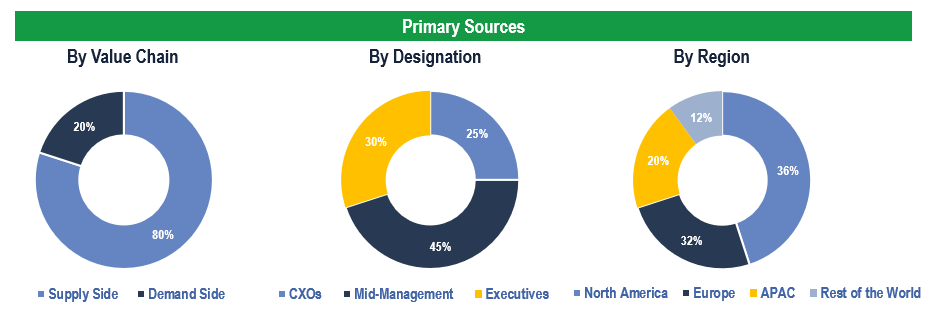
Market Size Estimation
Both ‘Top-Down and Bottom-Up Approaches’ were used to derive market size estimates and forecasts.
Data Triangulation
Research findings derived through secondary sources & internal analysis were validated with Primary Interviews, Internal Knowledge Repository, and Company Sales Data.

